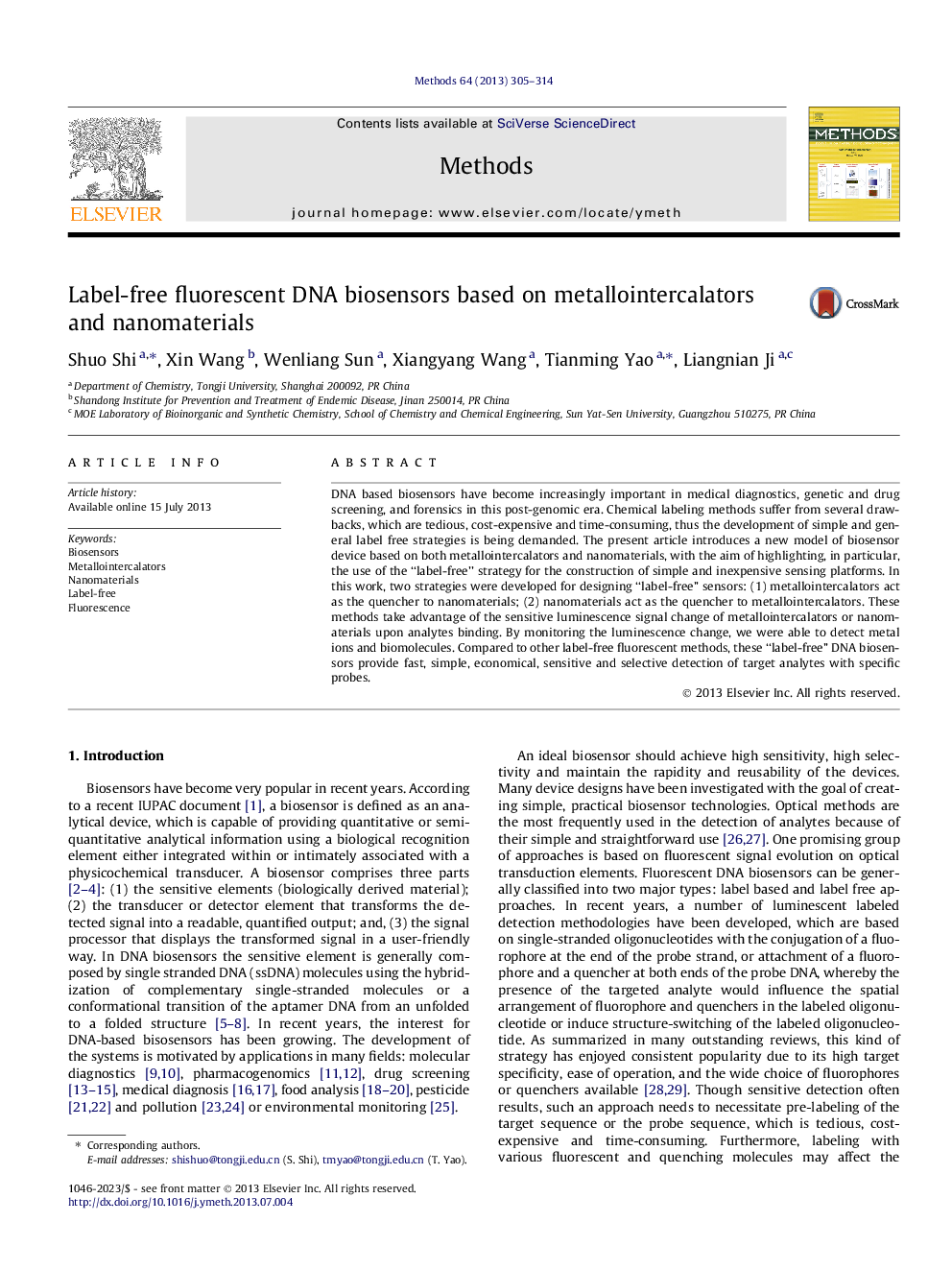| Article ID | Journal | Published Year | Pages | File Type |
|---|---|---|---|---|
| 10825858 | Methods | 2013 | 10 Pages |
Abstract
DNA based biosensors have become increasingly important in medical diagnostics, genetic and drug screening, and forensics in this post-genomic era. Chemical labeling methods suffer from several drawbacks, which are tedious, cost-expensive and time-consuming, thus the development of simple and general label free strategies is being demanded. The present article introduces a new model of biosensor device based on both metallointercalators and nanomaterials, with the aim of highlighting, in particular, the use of the “label-free” strategy for the construction of simple and inexpensive sensing platforms. In this work, two strategies were developed for designing “label-free” sensors: (1) metallointercalators act as the quencher to nanomaterials; (2) nanomaterials act as the quencher to metallointercalators. These methods take advantage of the sensitive luminescence signal change of metallointercalators or nanomaterials upon analytes binding. By monitoring the luminescence change, we were able to detect metal ions and biomolecules. Compared to other label-free fluorescent methods, these “label-free” DNA biosensors provide fast, simple, economical, sensitive and selective detection of target analytes with specific probes.
Related Topics
Life Sciences
Biochemistry, Genetics and Molecular Biology
Biochemistry
Authors
Shuo Shi, Xin Wang, Wenliang Sun, Xiangyang Wang, Tianming Yao, Liangnian Ji,
